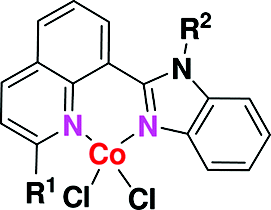There has been growing interest in anion recognition because anions play ubiquitous roles in chemical and biochemical processes, some of which are also of great environmental and medical concern. In particular, the binding of sulfate and phosphate ions represents a very important part in this field. However, due to its large standard Gibbs energy of hydration (△G=-1080 kJmol-1) and high charge density according to the Hofmeister effect, sulfate separation remains a challenge.
Many efforts have been put into the design of synthetic sulfate receptors, among which tripodal receptors that bear amide, urea, or other functional groups can efficiently bind the sulfate anion because of the favorable conformation for the formation of multiple hydrogen bonds.
 |
Research from the Lanzhou Institute of Chemical Physics of the Chinese Academy of Sciences and Northwest University have designed a neutral tripodal tris(ferrocenylurea) anion receptor (L) as an anion sensor through optical and electrochemical responses.
The CV studies revealed significant selectivity of the receptor for sulfate and phosphate ions, which induced distinct cathodic shifts of the ferrocene/ferrocenium redox couple in chloroform. UV/Vis and NMR spectroscopic results indicated selectivity for sulfate ions as proved by the increase in the d–d transition band of the receptor L and very large downfield shifts of the urea NH groups upon addition of the sulfate anions. In addition, the crystal structures of two anion half-capsules (TBA)2·[SO4 L]·H2O (1) and TBA· [F
L]·H2O (1) and TBA· [F L] (2) have also been obtained, which facilitated the understanding of the anion-binding properties of L.
L] (2) have also been obtained, which facilitated the understanding of the anion-binding properties of L.
The work has been financially supported by the National Natural Science Foundation of China .
The findings have been published in Chem. Eur. J. (Chem. Eur. J. 2011, 17, 2272 – 2280).


